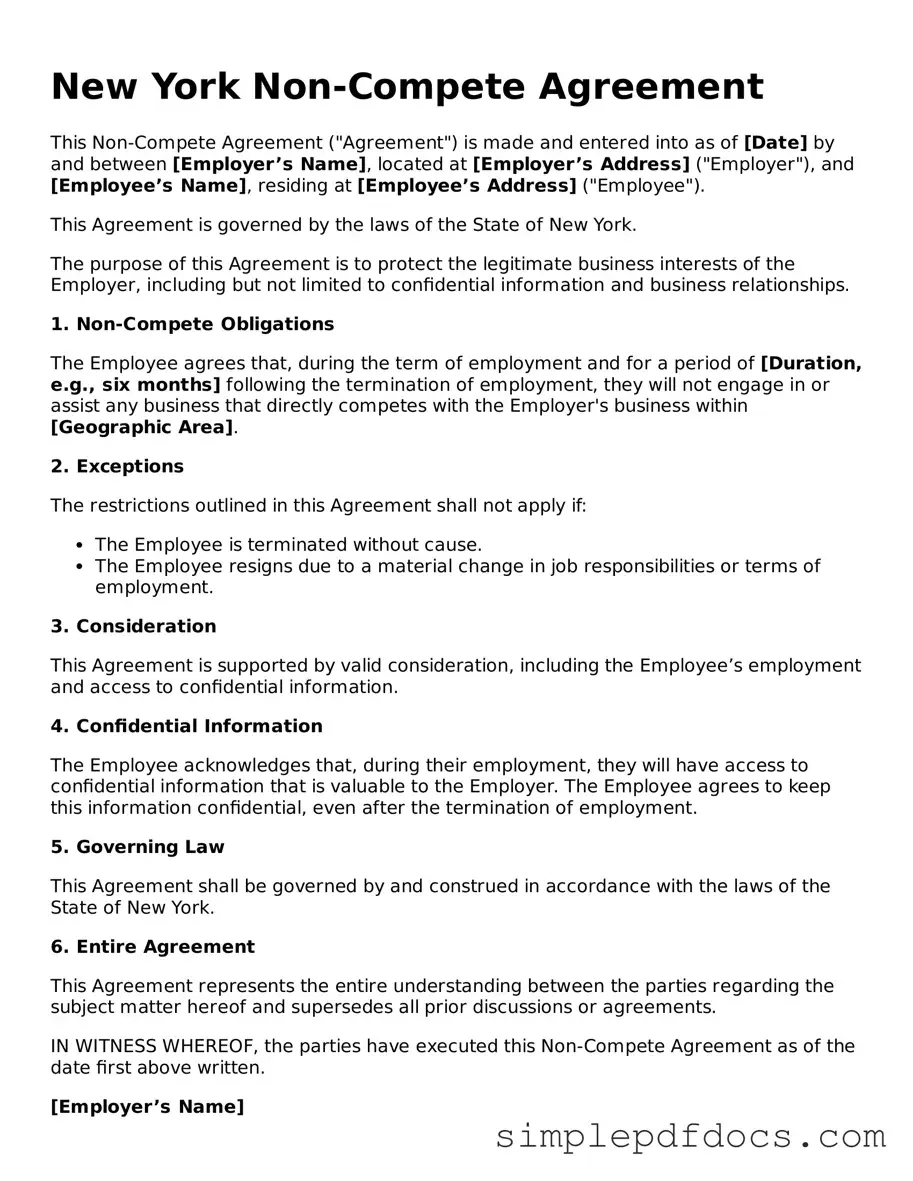Legal Non-compete Agreement Document for the State of New York
A New York Non-compete Agreement form is a legal document designed to restrict an employee's ability to work in similar fields or industries after leaving a job. This form aims to protect a company's confidential information and competitive edge. Understanding its implications is crucial for both employers and employees navigating the job market.
Get Document Here
